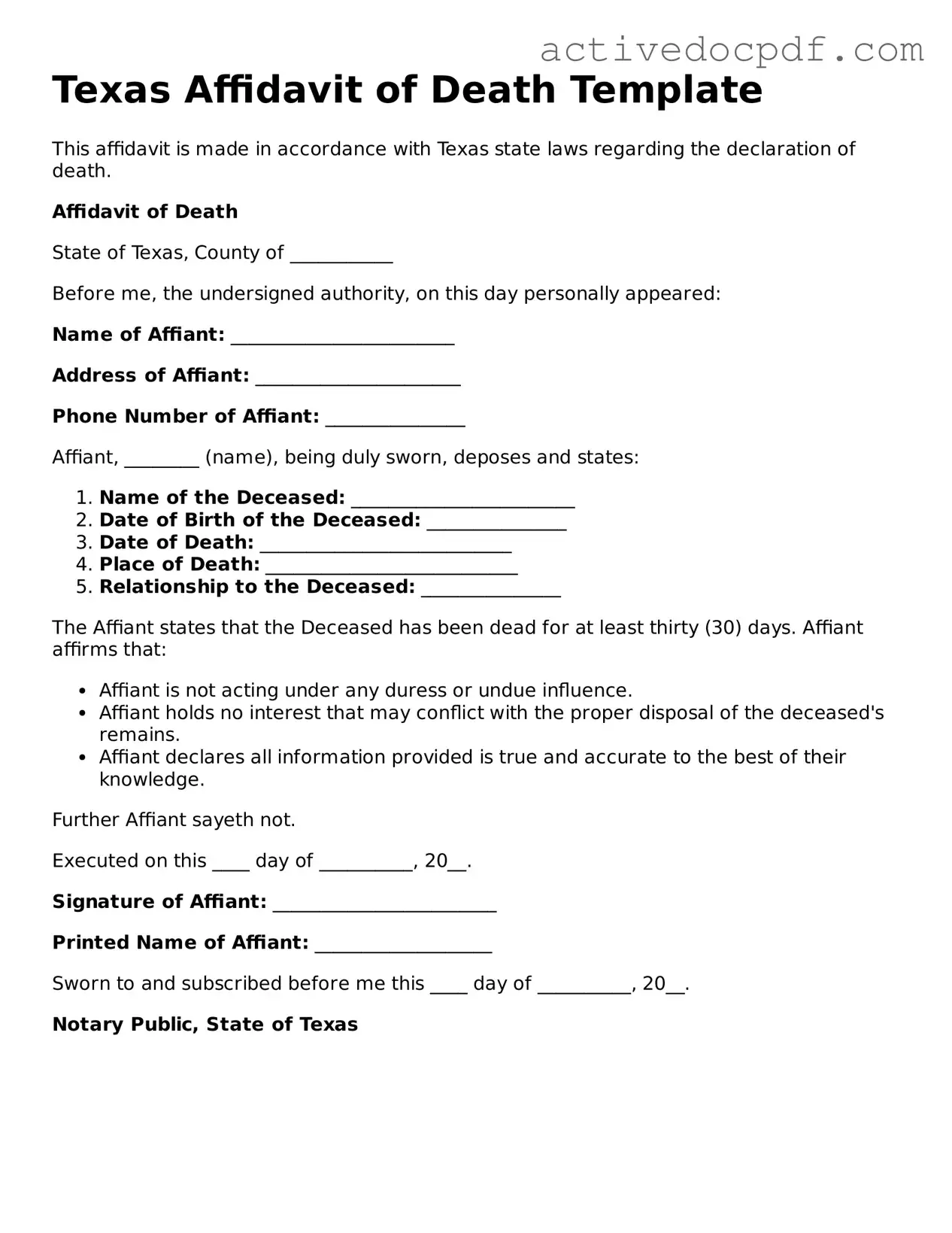Guide to Filling Out Texas Affidavit of Death
After you have gathered the necessary information, you can proceed to fill out the Texas Affidavit of Death form. This document will require specific details about the deceased and the individual completing the affidavit. Follow these steps carefully to ensure accuracy.
- Begin by writing the full name of the deceased in the designated space.
- Provide the date of death. Ensure that this is the official date as recorded on the death certificate.
- Include the deceased's last known address. This should be the address where they resided at the time of death.
- Fill in the name and relationship of the affiant, the person completing the form. Clearly state how you are connected to the deceased.
- Sign and date the affidavit in the appropriate section. Your signature confirms the accuracy of the information provided.
- Have the affidavit notarized. This step is crucial for the document's validity. A notary public will verify your identity and witness your signature.
Once you have completed these steps, you will be ready to submit the affidavit as required. Ensure you keep a copy for your records.
